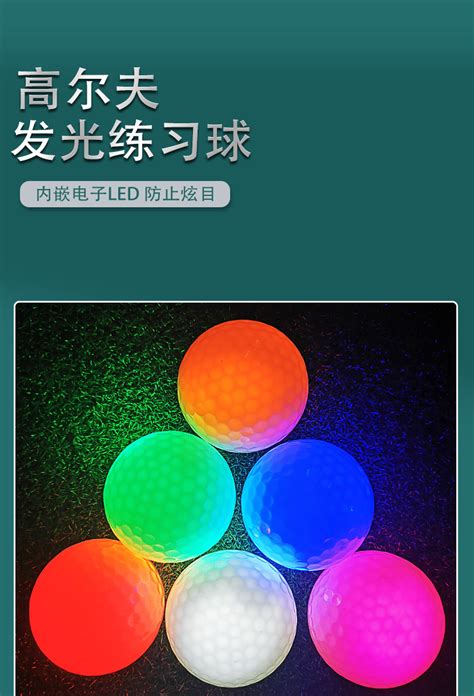Exploring the Illuminating Science Behind GlowintheDark Golf Balls
Glowinthedark golf balls add an extra layer of excitement and challenge to nighttime golfing adventures. The allure of seeing a golf ball streak through the darkened sky creates a magical experience for players and spectators alike. But how exactly do these luminous spheres work? Let's delve into the fascinating science behind the glowinthedark phenomenon of golf balls.

1. Phosphorescent Materials:
At the heart of glowinthedark technology lies phosphorescence. Phosphorescent materials have the remarkable ability to absorb energy from light and then emit it slowly over time in the form of visible light. This process is distinct from fluorescence, where materials emit light instantly upon absorbing energy, only to stop as soon as the excitation source is removed.
2. Phosphors in Golf Balls:
Glowinthedark golf balls are embedded with phosphors, which are compounds that exhibit phosphorescence. These phosphors are typically mixed into the outer layer of the golf ball during manufacturing. Common phosphors used in glowinthedark products include zinc sulfide and strontium aluminate.
3. Absorbing and Emitting Light:
When a glowinthedark golf ball is exposed to light, such as sunlight or artificial illumination, the phosphors within the ball absorb energy from this light. This absorbed energy excites the electrons in the phosphors, causing them to move to higher energy levels. However, unlike fluorescent materials that release this energy almost immediately, phosphors hold onto the energy temporarily.
4. Delayed Emission of Light:
Once the external light source is removed, the excited electrons in the phosphors gradually return to their original energy state. As they do so, they release the stored energy in the form of light. This emission of light occurs over a period of time, which is why glowinthedark objects continue to glow even in the absence of light.
5. Duration of Glow:
The duration and intensity of the glow emitted by a glowinthedark golf ball depend on various factors, including the quality of the phosphors used, the amount of light absorbed, and the ambient conditions. Golf balls with higherquality phosphors and greater exposure to light will typically glow brighter and longer.
6. Recharging the Glow:
To maintain optimal glow performance, glowinthedark golf balls need to be periodically "recharged" by exposing them to light. This recharging process replenishes the energy stored in the phosphors, ensuring that the golf balls remain sufficiently luminous for extended periods of time.
7. Applications Beyond Golf:
While glowinthedark technology is most commonly associated with recreational products like golf balls, it also finds applications in various other fields. For instance, glowinthedark paints and coatings are used for safety signage, emergency exit markers, and decorative purposes.
In conclusion, the captivating glow emitted by glowinthedark golf balls is made possible by the unique properties of phosphorescent materials. Through the process of absorbing and slowly emitting light, phosphors create an enchanting luminosity that adds an exciting twist to the game of golf, especially during nighttime play. So, the next time you tee off under the stars, remember the illuminating science behind those glowing golf balls lighting up the night sky.








